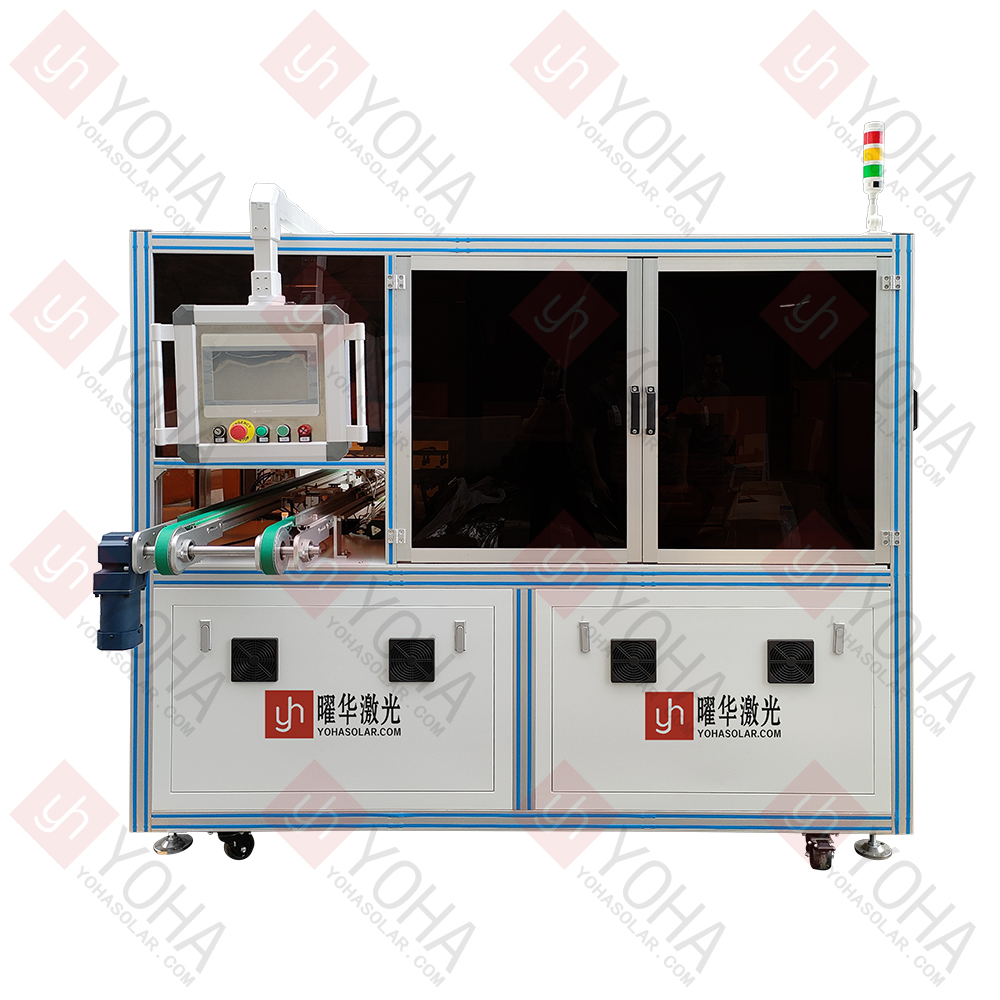Automatic Solar Cell EL Sorter
The Automatic Solar Cell EL Sorter is a precision equipment integrating electroluminescence (EL) detection technology with high-speed automated processing capabilities, specifically designed for photovoltaic cell production lines. It automatically feeds cells to the inspection station via a loading system, applies specific bias voltage to generate infrared light (EL imaging), captures images using high-sensitivity cameras, and employs intelligent image analysis software to identify microscopic defects (such as micro-cracks, broken fingers, fragments, sintering issues, contamination, etc.) and efficiency distribution irregularities in real-time. Ultimately, the equipment performs high-speed, precise grading, classification, and unloading of cells according to preset quality standards, serving as a critical tool for enhancing photovoltaic module production efficiency, product yield, and ensuring cell quality consistency.
Product Features
- Non-contact, High-precision EL Imaging: Utilizes advanced electroluminescence (EL) technology to rapidly capture high-resolution infrared images without physical contact, accurately revealing microscopic defects (e.g., micro-cracks, broken fingers, sintering defects, contamination) and efficiency distribution anomalies invisible to the naked eye.
- Fully Automated High-speed Processing: Integrates automated loading, precise transfer, rapid imaging, and automated unloading/sorting functions, enabling unmanned high-speed operation from feeding to grading, significantly improving production efficiency and capacity utilization.
- AI-powered Image Recognition & Classification: Equipped with powerful AI algorithms and deep learning models to analyze EL images in real-time, precisely identify defect types, locations, and severity, and perform millisecond-level automatic classification and grading based on preset standards (e.g., efficiency grades, defect levels).
- Yield Enhancement & Smart Quality Control: As a critical end-of-line quality inspection step, 100% full inspection and precise sorting effectively screen out defective cells, ensuring consistent and reliable cell quality for module assembly, substantially improving module yield, while providing real-time quality data feedback for smart manufacturing decisions.
Technical Specifications
| Item |
Specification |
| Model |
YHFX-ZDEL |
| Cell Compatibility |
Monocrystalline, polycrystalline cells, PERC, HJT, TOPCon, etc. |
| Camera Resolution |
5 Megapixels |
| Camera Type |
Custom high-definition industrial camera |
| Imaging Direction |
Vertical downward |
| Throughput |
2,000~5,000 cells/hour |
| Breakage Rate |
≤0.05% (Grade A cells) |
| Sensitivity |
Detects cracks <0.03mm wide |
| Loading Method |
Automatic loading/unloading |
| Effective Testing Area |
230*230mm |
| Sorting Bins |
8 sorting bins (configurable) |
| Functional Expansion |
Optional AOI/IV testing modules |
Applications
- 1. PV Cell Manufacturers: Serves as a critical quality control checkpoint on production lines, automatically detecting internal defects (micro-cracks, broken fingers, poor soldering, fragments, chipped edges, black spots, contamination) and sorting out defective cells to prevent them from entering downstream processes.
- 2. PV Module Manufacturers: Incoming inspection before cell stringing, ensuring received cells meet quality requirements to avoid potential failures (e.g., hot spots) caused by defective cells in modules.
- 3. Laboratories: Defect localization and analysis for solar cells.
Precautions
- 1. Electrical Safety: Applied current/voltage must strictly match cell type (e.g., different voltage ranges for PERC/TOPCon/HJT). Overcurrent may damage cells. Regularly clean contact probes to prevent oxidation-induced poor contact or sparking.
- 2. Stage & Conveyance System: Handle cells gently to avoid mechanical impact causing micro-cracks or breakage. Daily inspection of conveyor belts/rollers ensures no misalignment, wear, or foreign object blockage.
- 3. Camera & Optical System: Never touch lenses directly; clean only with professional lint-free cloth and lens cleaner. Regularly calibrate infrared camera focus and exposure parameters (especially when switching cell types).
- 4. Software & Algorithm Updates: Defect recognition models require periodic optimization to adapt to new process-induced defects (e.g., laser damage in TOPCon). Backup historical data to prevent compatibility issues during upgrades.
 Chinese
Chinese
 English
English
 Chinese
Chinese
 English
English

